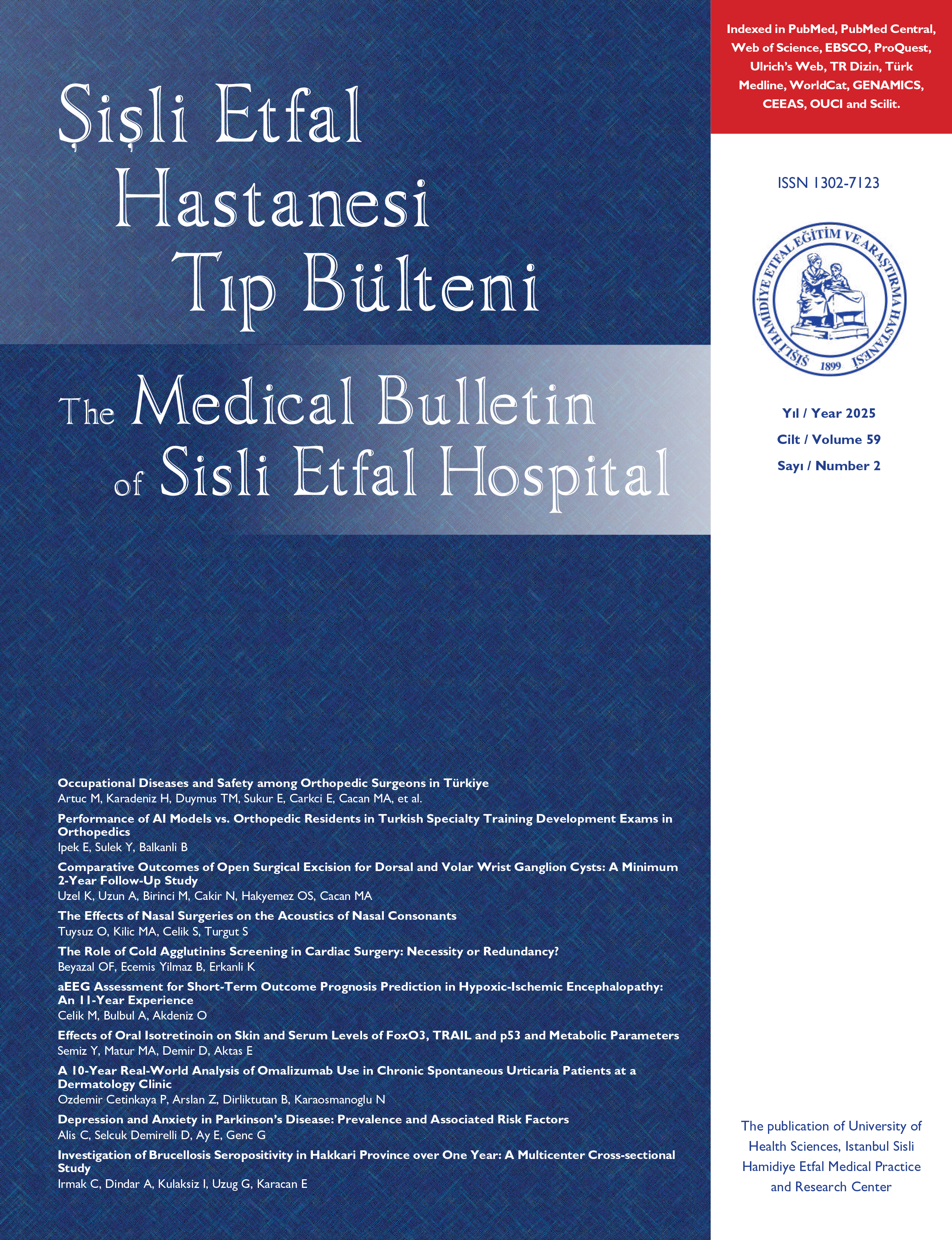
Management of the Axilla and the Breast After Neoadjuvant Chemotherapy in Patients with Breast Cancer: A Systematic Review
Bulent Citgez, Banu Yigit, Sitki Gurkan YetkinDepartment of General Surgery, University of Health Sciences Turkey, Sisli Hamidiye Etfal Teaching and Research Hospital, Istanbul TurkeyBreast cancer is the most common cancer in women worldwide. Breast cancer is traditionally treated with surgery, plus adjuvant systemic therapy and radiotherapy as required. Neoadjuvant chemotherapy (NACT) for the treatment of breast cancer is used for locally advanced operable breast cancer to reduce the tumor size, to perform breast conserving surgery, and to perform a limited axillary approach. Adjuvant chemotherapy for the treatment of inflammatory breast cancer and even in inoperable breast cancer is used to increase overall survival time and to delay disease progression while relieving symptoms. NACT for breast cancer is a new strategy that was introduced toward the end of the 20th century and is increasingly used in the treatment of breast cancer. At present, NACT is increasingly being used to reduce the need for axillary dissection and to convert patients with large tumors to candidates for breast conservation therapy in both locally advanced and operable breast cancers. Breast conserving procedures are currently more preferred by surgeons and axillary dissection is being replaced by sentinel lymph node biopsy after chemotherapy. One of the targets of neoadjuvant systemic therapy is to try to perform a less aggressive surgery by breast conservation, mainly for cosmetic reasons and avoiding axillary dissection mainly for arm mobility, pain, and lymphedema risk. The other target of neoadjuvant systemic therapy is to see the response of the tumor to chemotherapy and determine the treatment accordingly. Neoadjuvant systemic therapy increases the rate of complete pathological response by clearing the breast and axilla from tumor cells before surgery. In this review, we examine the key points of using the NACT in breast cancer, considering radiological imaging methods, surgical management, and reconstruction after NACT.
Keywords: Axillary dissection, breast cancer; neoadjuvant chemotherapy; pathological complete response; radiotherapy; surgery; reconstruction.Meme kanseri hastalarında neoadjuvan kemoterapi sonrası aksilla ve memenin yönetimi: Sistematik bir derleme
Bulent Citgez, Banu Yigit, Sitki Gurkan YetkinSağlık Bilimleri Üniversitesi Şişli Hamidiye Etfal Eğitim ve Araştırma Hastanesi, Genel Cerrahi Kliniği, İstanbulMeme kanseri, dünya çapında kadınlarda en sık görülen kanser türüdür. Meme kanserinin tedavisinde genel olarak cerrahi tedaviye ek olarak adjuvan sistemik tedavi ve gerektiğinde radyoterapi uygulanır. Meme kanserinin tedavisinde neoadjuvan kemoterapi, lokal ileri operabl meme kanserinde tümör boyutunun küçülmesi ile meme koruyucu cerrahi yapılabilmesi ve aksiller diseksiyon ihtiyacının azaltılması için kullanılır. İnflamatuar meme kanseri ve inoperabl meme kanserinin tedavisinde adjuvan kemoterapi, genel sağkalım süresini arttırmak ve semptomları giderirken hastalığın ilerlemesini geciktirmek için kullanılır. Meme kanseri için neoadjuvan kemoterapi, 20. yüzyılın sonlarına doğru ortaya çıkan ve meme kanseri tedavisinde giderek daha fazla kullanılan yeni bir stratejidir. Şu anda neoadjuvan kemoterapi, hem lokal ileri hem de operabl meme kanseri olan hastalarda sınırlı bir aksiller yaklaşım sağlanması ve büyük tümörlü hastaların meme koruyucu cerrahiye uygun hale gelmesi için giderek daha fazla kullanılmaktadır. Meme koruyucu prosedürler günümüzde cerrahlar tarafından daha fazla tercih edilmekte ve kemoterapi sonrası koltuk altı diseksiyonunun yerini sentinel lenf nodu biyopsisi almaktadır. Neoadjuvan sistemik tedavinin hedeflerinden biri, esas olarak kozmetik nedenlerle ve özellikle kol hareketliliğini korumak, ağrı ve lenfödem riskini önlemek için aksiller diseksiyondan kaçınarak, meme koruyucu daha az agresif bir ameliyat yapmaya çalışmaktır. Neoadjuvan sistemik tedavinin diğer bir hedefi, tümörün kemoterapiye verdiği yanıtı görmek ve buna göre tedaviyi belirlemektir. Neoadjuvan sistemik tedavi, cerrahi tedavi öncesi meme ve koltuk altı bölgesini tümör hücrelerinden arındırarak tam patolojik yanıt oranını artırır. Bu derlemede, meme kanserinde neoadjuvan kemoterapide önemli noktaları, neoadjuvan kemoterapi sonrası radyolojik görüntüleme yöntemlerini, cerrahi tedavi ve rekonstrüksiyonu irdeledik. (SETB-2020-11-235)
Anahtar Kelimeler: Meme kanseri, neoadjuvan kemoterapi, radyoterapi, cerrahi, rekonstrüksiyon, patolojik tam yanıt, aksiller diseksiyonManuscript Language: English



















